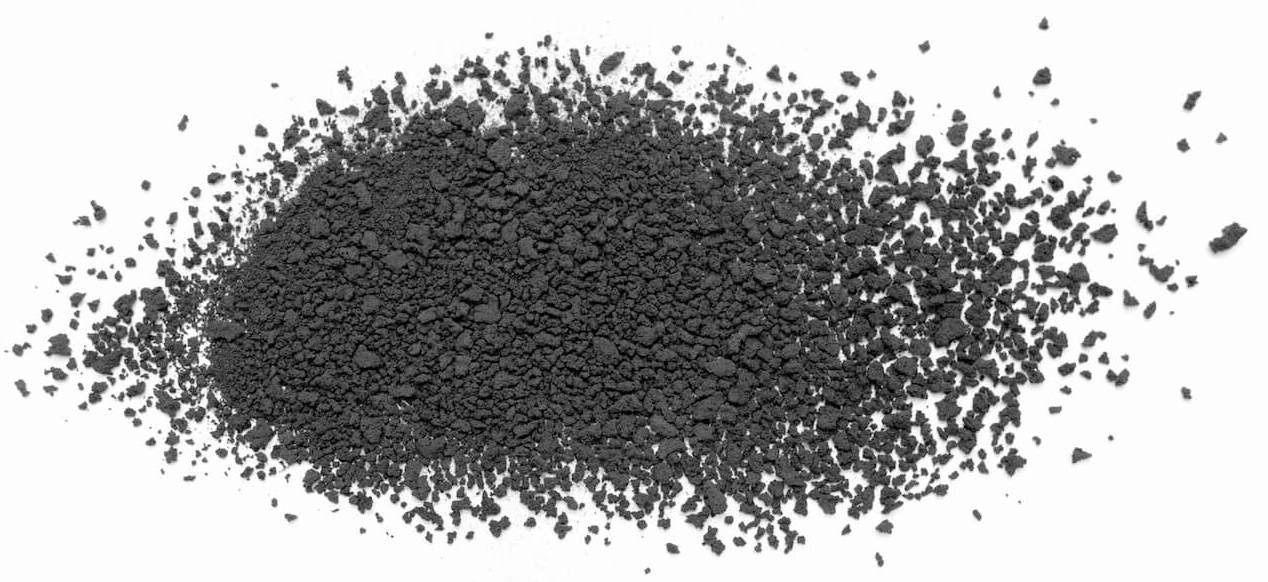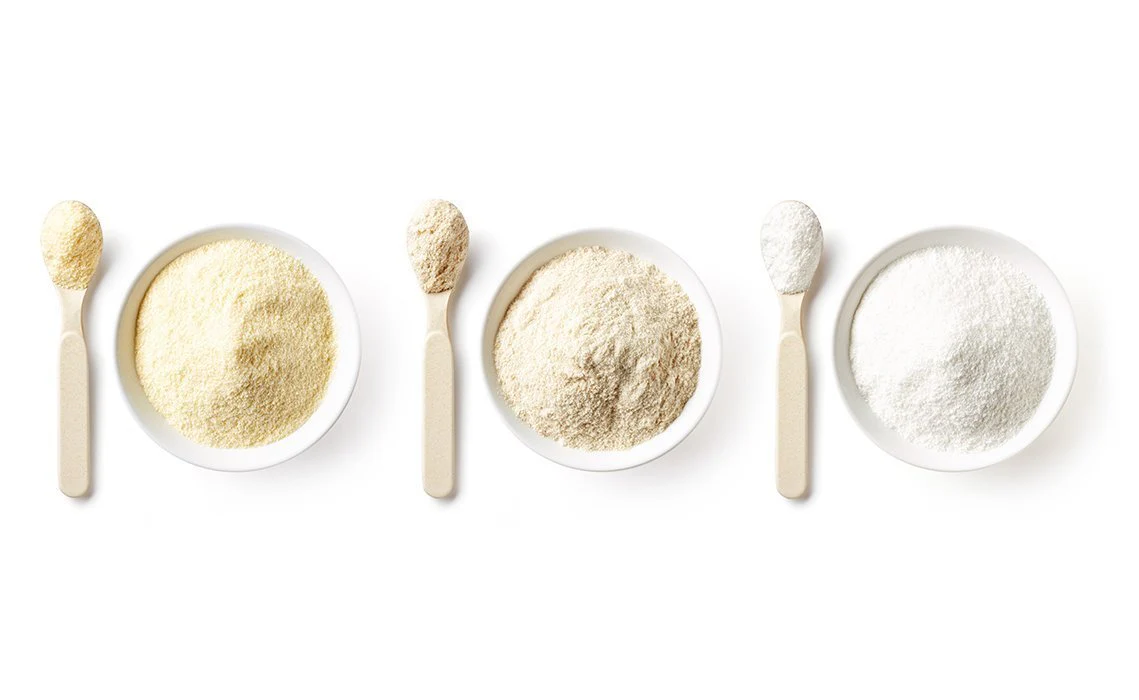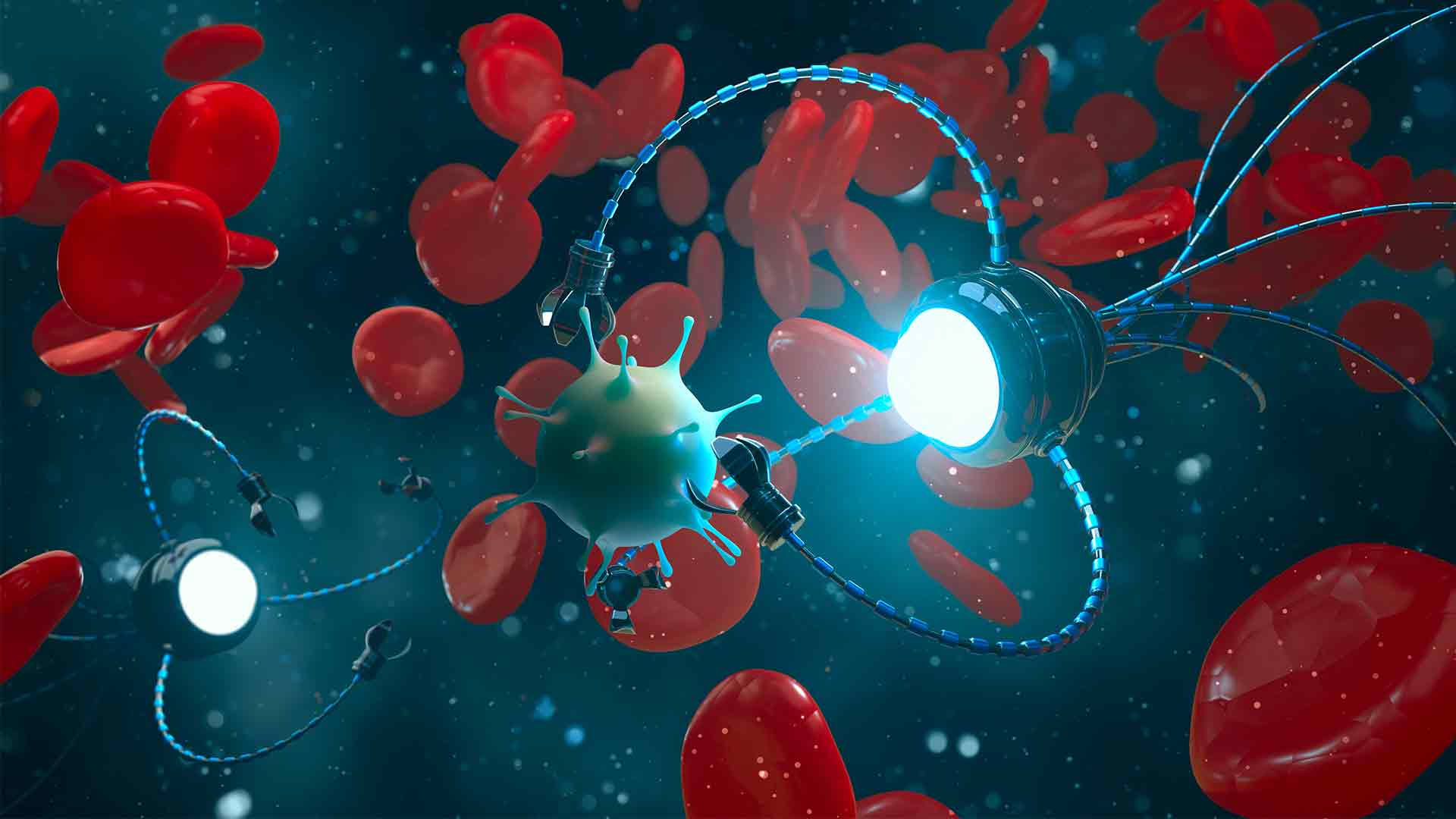Ultrafine powder preparation and classification technology
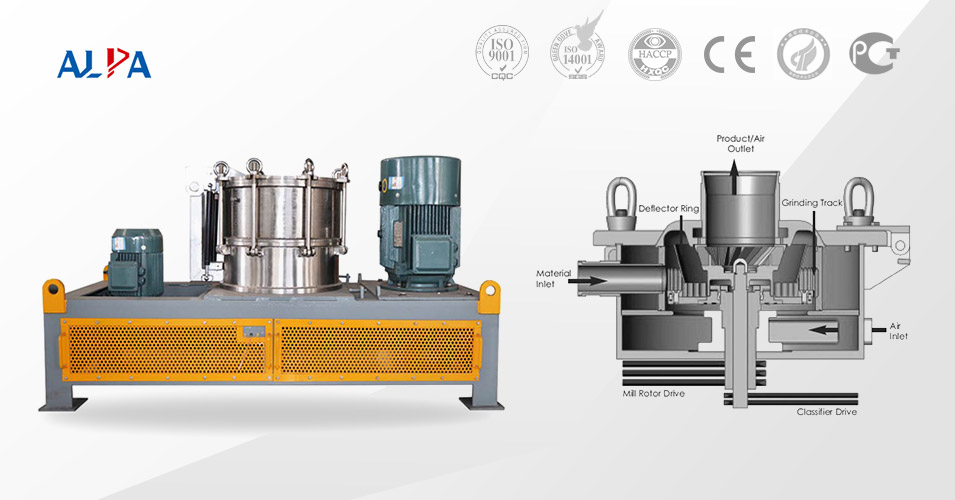
There are many methods for preparing ultrafine powders, which are usually divided into chemical synthesis and physical crushing methods based on the principle of their preparation. The chemical synthesis method is to obtain powders through chemical reactions, from ions, atoms, etc. through nucleus formation and growth. The ultrafine powders prepared by the chemical method have the advantages of small particle size, narrow particle size distribution, good particle shape and high purity, but the disadvantages are low output, high cost and complex process; the physical crushing method is to crush the material by mechanical force.
The advantages of mechanical crushing are large output, low cost and simple process, which is suitable for large-scale industrial production. Moreover, the mechanochemical effect is produced during the crushing process, which can increase the activity of the powder. Among them, the roller press is used in combination with the ball mill, which can be applied to large-scale industrial production, and the product particle grading is good and the activity is high. The air flow mill is also widely used in some special fields due to its better product performance.
The classification of ultrafine powders is based on the different movement trajectories of particles of different particle sizes in the medium under the action of centrifugal force, gravity, inertial force, etc., so as to achieve the separation of particles of different particle sizes and enter their respective collection devices.
When using pulverizing equipment for ultrafine pulverization, the forces acting on different particles are not uniform, and often only part of the powder meets the particle size requirements. If the products that have met the requirements cannot be separated out in time, the materials will be over-crushed, and this part of the powder will also agglomerate due to the small particle size, thereby reducing the pulverization efficiency. Therefore, timely use of ultrafine classifiers to effectively classify the crushed products can avoid over-crushing of materials, improve pulverization efficiency and reduce energy consumption. Ultrafine grading is generally divided into dry and wet types according to the different media used. Wet grading uses liquid as the dispersion medium, with high grading accuracy and good uniformity. However, wet grading has a series of subsequent operation problems such as drying and wastewater treatment, which limits its development. Dry classification is to classify powders by gravity field, inertial force field or centrifugal force field, mostly pneumatic classification. With the extensive application of high-speed mechanical impact and air flow pulverizers, dry classification has also been vigorously developed.
With the continuous expansion of the application field of ultrafine powders, the performance requirements of ultrafine powders in various fields are getting higher and higher, and the traditional preparation methods can no longer meet the current technical requirements. This is mainly reflected in:
1) The traditional single ultrafine powder equipment has low production capacity, high energy consumption, low resource utilization, and easy to cause pollution.
2) The uniformity and dispersibility of the prepared ultrafine powders are poor, and the agglomeration problem is serious, which reduces the product performance.
3) The equipment technology is backward, the research progress of the crushing machinery theory is slow, and there is a lack of new equipment for independent innovation.
4) The scale of the enterprise is small, the systematization and automation level of the production line is low, and the industry lacks stamina.
To this end, our company has made a lot of improvements and innovations in the existing ultrafine powder preparation technology, and has also achieved some research results.
The use of carbon black after grinding and equipment selection
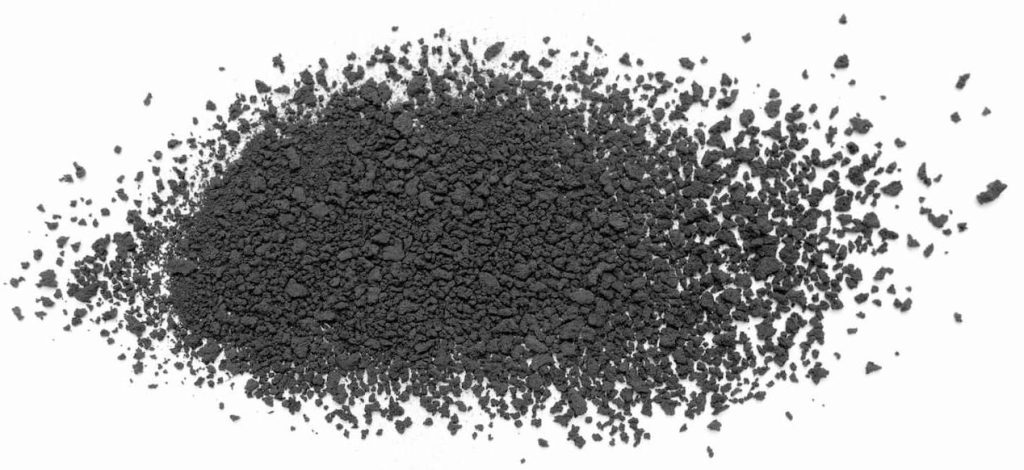
In recent years, the new materials industry has developed rapidly, and carbon black, as a carbon-based new material, has also received widespread attention from the market.
The main component of carbon black is carbon, which has excellent rubber reinforcement, coloring, conductivity and ultraviolet absorption functions, and is used in a variety of industrial fields.
In addition to 40% tire oil, the product of waste tire refining also contains 30% carbon black. The crude carbon black (50-60 mesh) is ground and processed to 325 mesh.
Uses of carbon black grinding
Processed carbon black can be used as a rubber reinforcing agent for the manufacture of automobile tires. It can also be used as a pigment, such as ink, coating, conductive agent for dry batteries, catalyst carrier, and superhard alloy material. About 70% of the world's carbon black is used in tire manufacturing, 20% is used for other rubbers, and the remaining less than 10% is used in industries such as plastic additives, dyes, and printing inks.
Carbon black grinding process
The production process of carbon black is to send the previously processed carbon black to a carbon black grinding machine for grinding and collecting the powder. Depending on the fineness of the finished product, grinding machines with different finished product fineness can be selected.
The first stage: the large pieces of carbon black are transported to the raw material warehouse by a special vehicle, and then the materials are sent to the jaw crusher by a forklift/manually for crushing, and the crushing is smaller than the feed size of the mill.
The second stage: the carbon black crushed by the crusher is lifted by the elevator to the storage hopper, and the material discharged from the storage hopper is evenly fed to the main machine by the feeder.
The third stage: the qualified products in the grinding process are screened by the screening system and enter the collector through the pipeline. After collection, they are discharged through the discharge valve as finished products, and the unqualified products fall into the main machine for re-grinding.
The fourth stage: the airflow after the purification of the finished product flows into the blower through the residual air duct above the dust collector. The air path is circulated. Except for the positive pressure from the blower to the grinding chamber, the airflow in the other pipelines flows under negative pressure, and the indoor sanitary conditions are good.
ALPA Grinding equipment
1. High degree of automation, reducing labor costs.
2. The product particle size is uniform, there is less over-powdering, and the grinding efficiency is high.
3. The equipment is easy to maintain, energy-saving and environmentally friendly, and has high production efficiency.
4. It occupies a small area, has low equipment construction investment, and has high space utilization.
Diamond related applications in the semiconductor industry chain
![]()
As we all know, semiconductors are the core strategic technology of many electronic devices and systems. Innovations in semiconductor design and manufacturing are driving new disruptive technologies: 5G, Internet of Things, artificial intelligence, electric vehicles, advanced defense and security capabilities.
In the semiconductor industry chain, the processing link occupies a vital position and is an extremely important link.
Semiconductor processing
Semiconductor processing is the process from crystal rod to single chip. From the process classification, the front-end processing technology of semiconductor materials mainly includes crystal rod cutting, crystal rod rounding, crystal rod slicing, wafer grinding, wafer chamfering and edge grinding, and wafer thinning and polishing; the subsequent packaging process includes circuit production, polishing, back thinning and dicing, all of which are inseparable from the extensive use of diamond tools.
At present, the third-generation semiconductor materials represented by silicon carbide and gallium nitride have the advantages of high breakdown electric field, high thermal conductivity, high electron saturation rate, and strong radiation resistance, and are more suitable for high voltage and high frequency scenarios. At the same time, silicon carbide and gallium nitride are hard and difficult to process, while diamond materials and related products have become an indispensable part of the third-generation semiconductor processing process due to their superhard properties.
With the popularization of technologies such as 5G and the Internet of Things, the consumer electronics industry has an increasing demand for precision machining. Diamond tools and diamond powder products provide high-quality precision surface treatment solutions for metals, ceramics and brittle materials, promoting technological progress and industrial upgrading in the industry.
Other applications in semiconductor field
Diamond Chip Diamond is not only the hardest material in nature, but also has amazing thermal conductivity and high electron mobility. In high-frequency device applications, diamond chips can effectively overcome the "self-heating effect" to ensure that the equipment can still operate stably in high-temperature environments.
Diamond Heat Sink Diamond has become an ideal choice for heat dissipation of high-power devices due to its excellent thermal conductivity (up to 2000W/m·k, 5 times that of copper and silver) and excellent insulation properties. In high-power semiconductor lasers, the application of diamond heat sinks can significantly improve heat dissipation efficiency and reduce thermal resistance, thereby increasing the output power of the laser and extending its service life.
Electronic Packaging By compounding diamond particles with high thermal conductivity metal matrices such as Ag, Cu, and Al, the diamond/metal matrix composite material prepared has initially demonstrated its great potential in the field of electronic packaging. Especially at the moment when computing power demand is surging, diamond packaging substrates provide innovative solutions for the heat dissipation problem of high-performance chips, helping the rapid development of industries such as AI and data centers.
Optical Window Diamond optical window is an optical device used under extreme conditions and is often used in high-end military equipment such as missile seekers. Diamond, with its smallest thermal expansion coefficient and highest thermal conductivity, is one of the best materials for making such windows. Diamond optical window can effectively reduce temperature, ensure the stable operation of infrared detectors, and improve the guidance accuracy and reliability of missiles.
Quantum Technology In the field of quantum technology, the NV color center of diamond, as a natural quantum bit candidate, provides the possibility of realizing solid-state quantum computing and quantum information processing.
BDD electrode Boron-doped diamond (BDD) electrode has unique advantages in electrochemical advanced oxidation processes with its extremely wide electrochemical window, extremely high oxygen evolution potential, extremely low adsorption characteristics and excellent corrosion resistance.
Although the direct application of diamond as a chip material is still far away, it has shown great potential and value in many links of the semiconductor industry chain. From semiconductor processing to diamond heat sinks and packaging, to quantum technology and BDD electrode applications, diamond is gradually penetrating into various key areas of the semiconductor industry, promoting technological innovation and industrial upgrading.
Fine processing of titanium dioxide

Titanium dioxide (TiO2), as one of the whitest substances in the world, occupies an irreplaceable position in the industrial field with its excellent hiding power, brightness and stability. It not only plays a key role in industries such as coatings, plastics, paper and cosmetics, but also shows great potential in the fields of environmental protection and new energy. This article will explore the composition and application of titanium dioxide in depth, and focus on the grinding process that is indispensable in its production process, especially the application of Raymond mill.
1. Composition of titanium dioxide
The main component of titanium dioxide is titanium dioxide (TiO2), which is an inorganic compound with high refractive index and high light scattering ability. There are two main crystal structures of titanium dioxide: anatase and rutile. Anatase titanium dioxide has high photoactivity, while rutile is known for its higher stability and weather resistance.
2. Application of titanium dioxide
Coating industry
Titanium dioxide is an indispensable white pigment in the coating industry. It can provide excellent hiding power and brightness, while also enhancing the durability and weather resistance of the coating.
Plastic industry
In plastics, titanium dioxide is used as a white pigment and UV stabilizer. It can improve the whiteness and hiding power of plastic products, while also preventing degradation caused by ultraviolet rays.
Papermaking industry
Titanium dioxide is used in the papermaking industry to improve the whiteness and opacity of paper. It can make paper brighter and improve the printing performance of paper.
Cosmetics industry
In cosmetics, titanium dioxide is used as a white pigment and UV shielding agent. It can provide a natural skin tone while protecting the skin from UV damage.
3. Titanium dioxide grinding process
The production process of titanium dioxide includes ore extraction, chlorination or sulfuric acid treatment, calcination, and grinding and grading of the final product. Among them, grinding and grading are the key steps to determine the quality of titanium dioxide. The grinding process directly affects the particle size and distribution of titanium dioxide, which in turn affects its application performance. Titanium dioxide with uniform particle size and narrow distribution can provide better hiding power and brightness. In the current market, Raymond mill is generally used for processing.
Advantages of Raymond mill processing
Raymond mill is a highly efficient grinding equipment, which is widely used in the grinding and grading of titanium dioxide. Raymond mill grinds the coarse product into fine powder through the extrusion and grinding action of the grinding roller and grinding ring, and accurately grades it through the classifier.
High efficiency and energy saving
The Raymond mill adopts an efficient grinding principle and can grind materials into fine powder in a short time. Compared with traditional ball mills, the Raymond mill has lower energy consumption and higher grinding efficiency.
Uniform particle size
The Raymond mill is equipped with a classifier, which can classify materials according to particle size, and the product particle size is uniform. This is especially important for the production of titanium dioxide, because titanium dioxide with uniform particle size can provide better performance during application.
Easy operation
The Raymond mill has a reasonable structural design, easy operation and convenient maintenance. Its high degree of automation can reduce manual operation and improve production efficiency.
Calcium oxide: an innovative pioneer in environmental protection
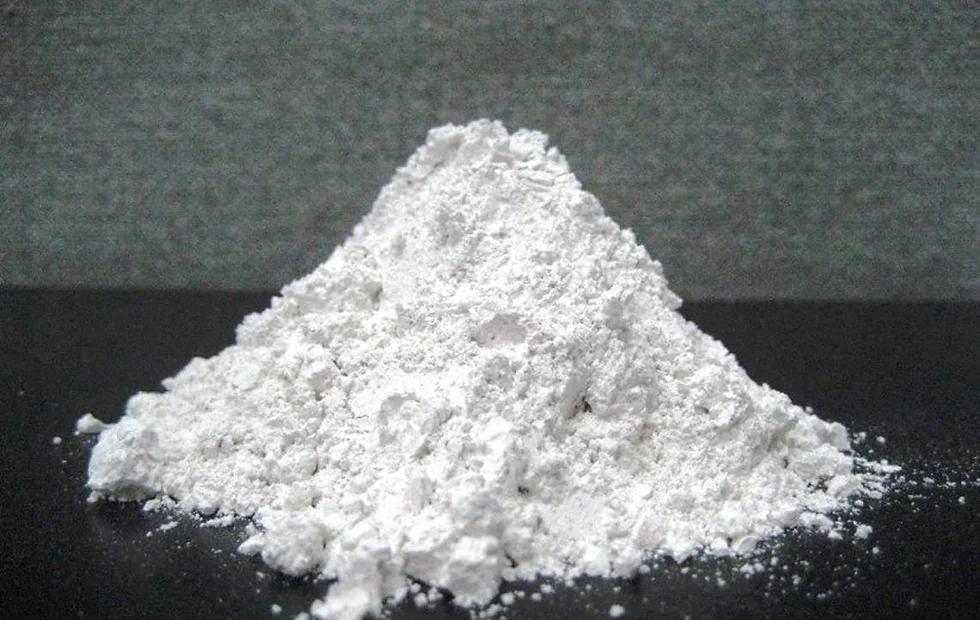
Calcium oxide, commonly known as quicklime, is a white or grayish white solid with strong water absorption. It can react with water to form calcium hydroxide and release a lot of heat.
This basic chemical reaction characteristic is the basis for its great success in the field of environmental protection.
In the field of water treatment, calcium oxide has demonstrated extraordinary capabilities.
By adjusting the pH value of water bodies, it can effectively neutralize acidic wastewater and reduce the damage of water acidification to aquatic ecosystems.
At the same time, calcium oxide can also react with pollutants such as heavy metal ions and phosphates in water bodies to form water-insoluble precipitates, thereby removing these harmful substances and improving water quality.
This characteristic makes calcium oxide an important raw material for sewage treatment and drinking water purification, providing an economical and effective solution for protecting water resources.
Calcium oxide also plays an irreplaceable role in solid waste treatment.
It can react with acidic substances in hazardous waste to reduce its toxicity, and in some cases, through high-temperature calcination, it can even convert waste into valuable building materials or adsorbents to achieve resource recycling.
This not only reduces environmental pollution caused by landfill and incineration, but also promotes the sustainable use of resources.
In the face of the challenge of global warming, calcium oxide also shows potential in carbon capture and storage (CCS) technology.
By reacting with carbon dioxide to form calcium carbonate, calcium oxide can be used as an efficient carbon dioxide absorber.
Although this technology is still in the research and development stage, its low cost and high efficiency provide new ideas for mitigating greenhouse gas emissions.
In agriculture, calcium oxide, as a soil conditioner, can regulate soil pH, increase soil fertility, and promote crop growth.
It can also effectively kill harmful bacteria and parasites in the soil, reduce the use of pesticides, and promote agriculture to develop in a more environmentally friendly and sustainable direction.
With the advancement of science and technology and the enhancement of environmental awareness, the application of calcium oxide in the field of environmental protection will become more extensive and in-depth.
From water purification to solid waste treatment, from carbon capture technology to agricultural improvement, calcium oxide is becoming a bridge connecting nature and technology, the past and the future with its unique properties. We have reason to believe that in the near future, calcium oxide will shine in more fields and become an important force in promoting global environmental protection.
In this era full of challenges and opportunities, let us pay attention to and support innovative materials and technologies like calcium oxide, which are inconspicuous but can play a huge role in the field of environmental protection, and work together to create a greener and healthier home on Earth.
Dolomite Grinding Technology and Equipment

1. In the field of building materials, ground dolomite can be used as a high-quality filler for the production of artificial marble, ceramics, etc. Its powder can improve the physical properties of the material, such as increasing hardness and wear resistance.
2. In the metallurgical industry, dolomite powder can be used as a flux. It helps to lower the melting point of the ore, promote the smelting process of the metal, and improve the smelting efficiency.
3. In agriculture, processed dolomite powder can be used as a soil conditioner. It can adjust the pH of the soil and provide nutrients such as calcium and magnesium for plant growth. It is especially suitable for acidic soil and is conducive to improving soil fertility.
Dolomite grinding process
1. Crushing and screening: crush the dolomite ore to make its particle size meet the requirements of the grinding equipment. Then the crushed material is graded by screening equipment to remove oversized or undersized particles.
2. Grinding: send the graded dolomite particles into the grinding mill for grinding. Commonly used grinding equipment includes vertical mill, European mill, superfine mill, etc.
3. Grading and separation: the ground powder is graded and separated again by grading equipment to ensure that powders of different particle sizes can be accurately separated.
4. Packaging and transportation: the final dolomite powder is packaged according to the purpose for transportation and application.
In actual production, the specific process flow may vary due to factors such as equipment selection, production scale, and product requirements.
In terms of industrial applications, dolomite and its series of products have broad application prospects. Common dolomite products on the market include dolomite ore of different particle sizes, dolomite sand (6-10 mesh, 10-20 mesh, 20-40 mesh, 40-80 mesh, 80-120 mesh) and dolomite powder (10 mesh through, dolomite ultrafine powder 140 mesh, 325 mesh, 600 mesh, 1000 mesh, 1600 mesh), etc.
The equipment of dolomite ultrafine stone grinding machine includes crusher, bucket elevator, storage bin, vibrating feeder, micro powder grinding host, frequency conversion classifier, double cyclone powder collector, pulse dust removal system, high pressure fan, air compressor, electrical control system, etc.
9 standards for using talcum powder in plastics
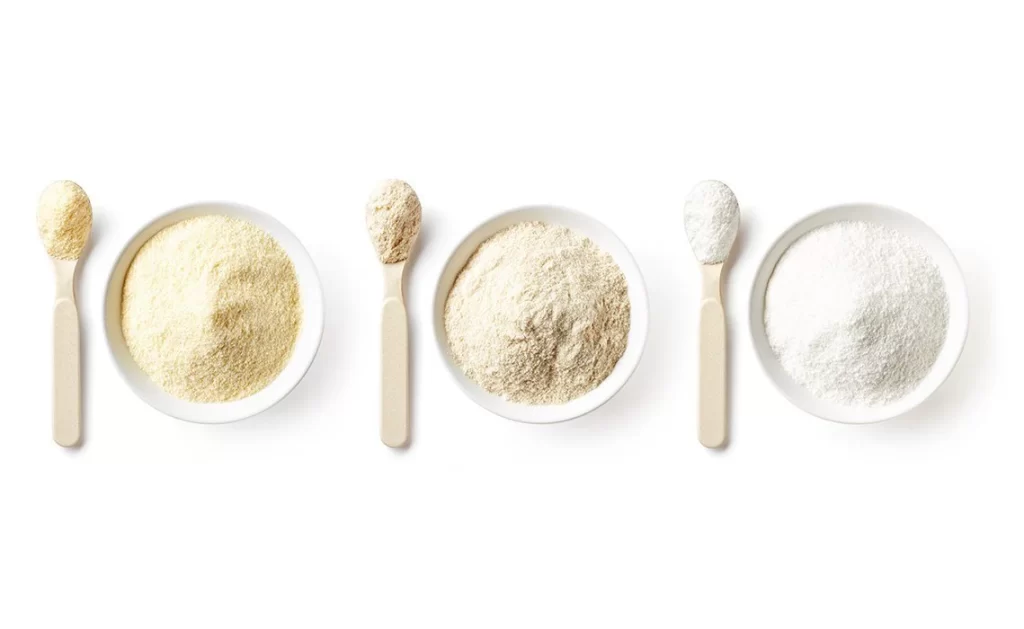
Talc is named for its soft texture and strong greasy feeling. It is a hydrated magnesium silicate mineral with a layered structure, mainly containing magnesium silicate, aluminum oxide, nickel oxide, etc.
Talc has excellent physical and chemical properties such as lubricity, anti-stickiness, flow aid, fire resistance, acid resistance, insulation, high melting point, chemical inactivity, good hiding power, softness, good gloss, strong adsorption, etc. It is widely used in coatings, paints, plastics, papermaking, ceramics, cosmetics, medicines, food, daily necessities and other industries.
Talc is one of the most widely used inorganic powders in plastic products. The characteristic of talc in plastic products is that it can significantly improve certain properties of plastic products. Therefore, when choosing talc, the following requirements should also be met for talc.
High purity
The higher the purity of talc, the better its reinforcing effect. Among other mineral impurities in talc, metal minerals (especially iron) have a very obvious effect on the anti-aging property of plastics.
Structure
Talc is usually in the form of dense blocks, leaves, radials, and fibers. Since the crystal structure of talc is layered, it has a tendency to split into scales and has special lubricity.
High-quality ultra-fine talcum powder has a flaky structure. When used in plastic products, it can be evenly dispersed in the resin in a layered manner, and has good compatibility and complementarity of mechanical properties with the resin.
Wet whiteness and hue
After talcum powder and plastic are mixed, the color of the plastic changes more or less. Dark plastic products do not have too high requirements for the whiteness of the added talcum powder. However, in order to make light-colored products have better colors, talcum powder must have a higher wet whiteness and a suitable hue.
Silicon dioxide content
The silicon (SiO2) content in talcum powder is an important indicator for measuring the grade of talcum powder. The higher the silicon content in talcum powder, the higher the purity of talcum powder, the better the application effect, and the higher the price.
Customers need to choose talcum powder according to the performance requirements of different plastic products. For example, the silicon content of talcum powder added to agricultural film should be higher, the particle size should be small, and the particle size distribution should be narrow, so that the light transmittance of the film is good, and the tensile strength and puncture resistance of the film are improved.
For talcum powder used in injection molding, plates, and rods, the silicon content requirement does not need to be too high. Products with lower silicon content are not only cheaper, but also can improve the hardness and impact strength of plastic products.
Color
The colors of unprocessed talcum powder ore are different from each other, which can be white, gray, light red, pink, light blue, light green and other colors. Talc powder also has a special silver-like or pearl-like color and has different degrees of solid luster. This color can improve the appearance and visual effect of the product.
Surface properties
Talc powder presents different surface properties depending on its source. The specific surface area and oil absorption rate are largely determined by the mineral resources and product fineness. Other factors affecting these properties are surface roughness, particle shape and pore volume. The large specific surface area and appearance structure of talcum powder will not only affect the dosage of additives, but also promote the bonding force between resin structures, thereby improving the physical properties of plastic products.
Moisture
The structural morphology of talcum powder determines its characteristics. Although talcum powder is hydrophobic, due to the irregularity of the edge of its particle shape, it contains both structural water and crystal water. Therefore, the moisture content of talcum powder is greater than that of calcium carbonate. Moisture can easily affect the performance of plastics, so the removal of moisture from talcum powder and the drying process should be highly valued.
Static electricity
Talc powder has a layered structure and a large specific surface area. The irregular shape of the particles and the convex and concave shape of the surface make it have a large friction factor and easy to generate static electricity, which makes it difficult to disperse the agglomeration between tiny particles and affects the application effect.
Flowability
During the extrusion process, the flaky structure of talcum powder has poor fluidity and difficulty in dispersion than other granular inorganic materials, and the main screw torque is large, so better activation and coating is the key to overcoming these problems.
Boron Nitride Applications in Health
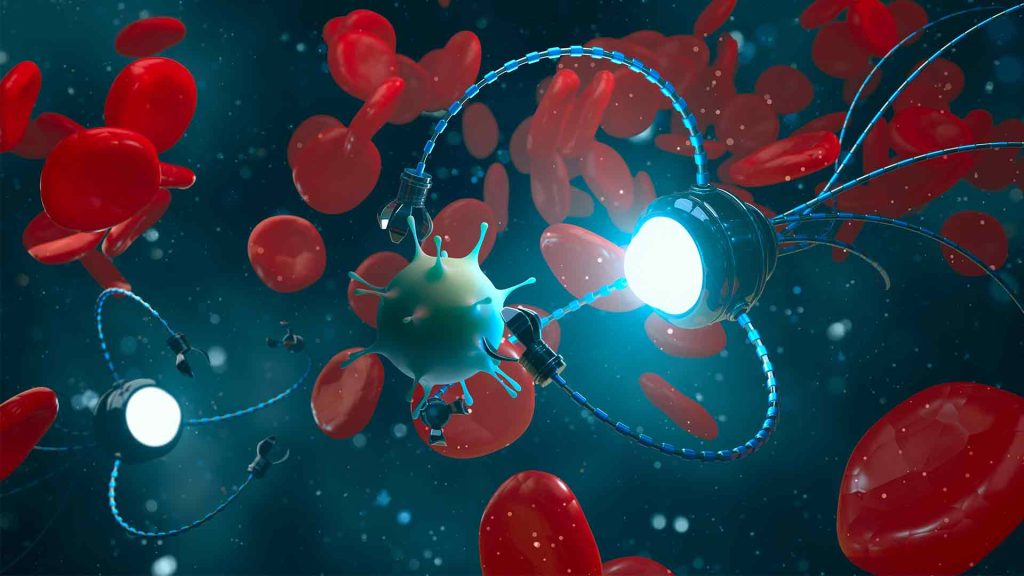
Boron nitride is a layered molecular crystal with a hexagonal regular network structure composed of the third main group element boron and the fifth main group element nitrogen. In the molecular crystal layer, boron atoms and nitrogen atoms are combined by coordination bonds, and the coordination bond binding force is very strong, so the B atoms and N atoms in the layer are tightly bound. The layers are connected by molecular bonds. Since the molecular bonds are weak, it is very easy to fall off between the layers.
According to the different crystal forms, the crystal structure of boron nitride can be mainly divided into four types: hexagonal boron nitride (h-BN), cubic boron nitride (c-BN), wurtzite boron nitride (w-BN) and rhombohedral boron nitride (r-BN). Among them, hexagonal boron nitride (h-BN) is the most widely used.
Application of Boron Nitride in the Biomedical Field
BN has good biocompatibility in vitro and in vivo, and has similar or even superior properties of graphene-based materials in biological applications. It can be used in antibacterial, drug delivery, boron delivery agent, tissue engineering, in vivo imaging and other fields.
(1) Antibacterial
Recently, some studies have found that boron nitride nanosheets have effective antibacterial effects on antimicrobial resistance (AMR) bacteria, and have good biocompatibility in the body without causing secondary drug resistance during long-term use.
(2) Drug delivery
h-BN is also considered to be a promising drug carrier. Hexagonal boron nitride nanosheets (BNNSs) were synthesized in large quantities at one time by the salt template method, and effectively inhibited the proliferation of breast cancer in in vivo and in vitro experiments, indicating the potential of BNNSs in drug delivery applications. Some studies have found that using spherical BN as a carrier, deoxyribonucleic acid-loaded brain natriuretic peptide penetrates into tumorous IAR-6-1 cells through the endocytosis pathway, and then releases DOX into the cytoplasm and nucleus, thereby targeting and killing cancer cells.
(3) Tissue engineering
In the field of dental materials, BNNs were prepared by high-energy ball milling and dispersed in a zirconia matrix, and the composite powder was consolidated by plasma sintering. Zirconia with added BNNs showed a strength of up to 27.3% and a fracture toughness of 37.5%, and inhibited the degradation of the zirconia matrix in a humid environment, demonstrating the potential value of BNNs as a dental material reinforcement.
(4) Boron delivery agent
Due to its high boron content and low cytotoxicity, Boron nitride nanomaterials can be used as boron delivery agents for boron neutron capture therapy (BNCT). BNCT is a new type of specific radiation cancer treatment that can target and kill cancer cells without harming normal cells. Boron nitride nanotubes modified with polyethylene glycol have been shown to be boron delivery agents for BNCT. The boron accumulation in B16 melanoma cells is about three times that of the second-generation boron delivery agent BSH (disodium thiododecaborane). Boron nitride nanotubes modified with polylysine and folic acid are selectively taken up by glioblastoma multiforme cells after coupling with fluorescent quantum dots. They can not only be used as boron delivery agents for BNCT, but also can trace the intracellular behavior of drugs. Boron nitride nanospheres have also been reported to be a high-quality boron reservoir for the treatment of prostate cancer. Boron nitride with controllable crystallinity can continuously release boron, thereby reducing the activity of prostate cancer cells and inducing cell apoptosis. The in situ tumor model confirmed the in vivo anti-cancer efficacy of hollow boron nitride spheres.
Spherical Silica Powder Production
![]()
Spherical silicon powder has relatively high purity, very fine particles, good dielectric properties and thermal conductivity, and has the advantages of low expansion coefficient. It is widely used in large-scale integrated circuit packaging, aerospace, coatings, medicine and daily cosmetics, and is an irreplaceable important filler.
There are two methods for preparing spherical silicon micropowder: physical and chemical method and chemical method. The physical and chemical methods mainly include flame method, deflagration method, high temperature melt spray method, plasma method and self-propagating low temperature combustion method. The chemical method mainly includes gas phase method, liquid phase method (sol-gel method, precipitation method, microemulsion method), chemical synthesis method, etc.
In the production process of spherical silicon micropowder, strict control of each production link is the key to ensure that the product quality meets the standards.
The main raw material of spherical silicon micropowder is angular molten or crystalline silicon micropowder.
Stability of raw materials
The raw materials used to produce spherical silicon micropowder are preferably angular silicon micropowder processed from the same ore vein and the same production process, so as to maximize the uniformity of the raw materials and ensure that the products with high spheroidization rate are produced under the condition that the spheroidization temperature, gas supply, feed amount, pressure, flow rate and other factors remain unchanged.
The physical and chemical indicators of the raw materials should be controlled within a certain range
The physical and chemical indicators of the raw materials fluctuate too much, which will not only affect the spheroidization temperature, but also affect the dispersion of the spheres.
Raw material particle size and particle size distribution
Different particle sizes have different heating areas, and their passivation temperature points after heating are also different.
Raw material particle dispersibility
During the processing of angular silicon micropowder, especially ultrafine angular silicon micropowder, secondary agglomeration of powder often occurs due to the increase of surface energy.
Moisture content of raw materials
If the angular silicon micropowder used as the raw material of spherical silicon micropowder is affected by factors such as improper protection, too long storage time, and excessive environmental humidity, it will cause the powder to absorb moisture, have high moisture content, and agglomerate, which will also affect the spheroidization effect of spherical silicon micropowder.
Radioactive elements in raw materials should be low
For the raw materials for producing low-radiation spherical silicon micropowder, only when the radiation elements themselves (such as uranium U, thorium Th, etc.) are very low can the products produced meet the requirements of low-radiation spherical silicon micropowder.
There are two links in the surface modification of spherical silicon micropowder. One is to disperse the secondary agglomerated particles of spherical silicon micropowder raw materials - angular silicon micropowder, especially ultrafine angular silicon micropowder, and first perform surface activation treatment to disperse the particles before sphericalization. This requires that the surface dispersant used must be completely volatilized at high temperature, otherwise it will cause carbon deposits in the spherical silicon micropowder, affecting product quality.
The second is the late modification of spherical silicon micropowder. When silicon micropowder is used as an inorganic filler and mixed with organic resin, there are problems of poor compatibility and difficulty in dispersion, which leads to poor heat resistance and moisture resistance of materials such as integrated circuit packaging and substrates, thereby affecting the reliability and stability of the product. In order to improve the problem of interface bonding between silicon micropowder and organic polymer materials and improve its application performance, it is generally necessary to modify the surface of silicon micropowder.
The key to efficient powder modification
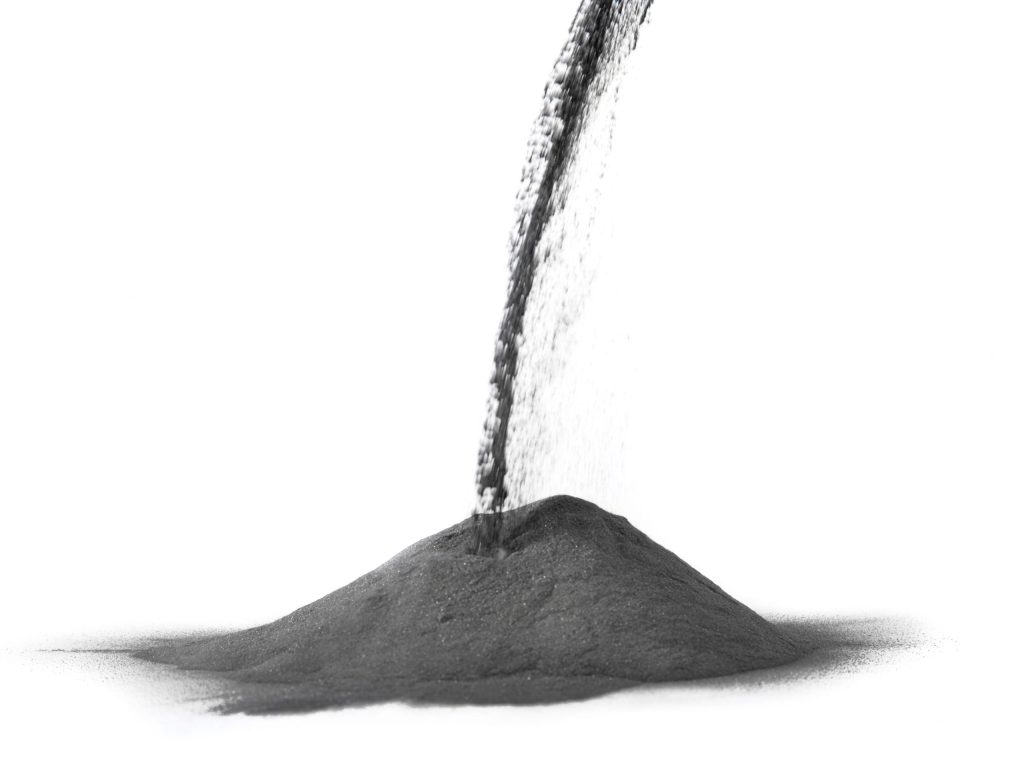
Powder surface modification, also known as surface modification, surface treatment, etc., refers to the use of certain methods (physical, chemical or mechanical, etc.) to treat, modify and process the surface of particles, and purposefully change the physical and chemical properties of the powder surface to meet the requirements of powder processing and application. Therefore, understanding the physical and chemical properties of powders is crucial to effectively change these properties of the powder surface to achieve efficient powder modification.
Specific surface area
The specific surface area of powder materials is related to their particle size, particle size distribution and porosity. For powder materials, the specific surface area is related to the particle size. The finer the particle, the larger the specific surface area; it is related to the roughness of the particle surface. The rougher the surface, the larger the specific surface area; it is greatly related to the pores on the particle surface. The specific surface area of porous powder increases sharply. The specific surface area of powder materials with developed micropores can be as high as several thousand square meters per gram.
Specific surface area is one of the most important surface properties of powder materials and one of the main bases for determining the amount of surface modifier. The amount of surface modifier is related to the specific surface area of the powder. The larger the specific surface area, the more surface modifier is required to achieve the same coverage rate.
Surface energy
The surface energy of the powder is related to its structure, the bond type and bonding force between atoms, the number of surface atoms and the surface functional groups. After the material is crushed, a new surface is generated, and part of the mechanical energy is converted into the surface energy of the new surface. Generally speaking, the higher the surface energy of the powder, the more it tends to agglomerate, and the stronger the water absorption and adhesion.
Surface wettability
The wettability or hydrophobicity of the surface of inorganic powder is one of the important surface properties of fillers for polymer-based composite materials such as plastics, rubbers, adhesives, and fillers or pigments for oily coatings.
Surface adsorption characteristics
When molecules (or atoms) in the gas phase or liquid phase collide with the surface of the powder, the interaction between them causes some molecules (atoms, ions) to remain on the surface of the powder, causing the concentration of these molecules (or atoms, ions) on the surface of the powder to be greater than that in the gas phase or liquid phase. This phenomenon is called adsorption. Powders are usually called adsorbents, and the adsorbed substances are called adsorbates. The larger the specific surface area of the powder, the more significant the adsorption phenomenon.
Surface electrical properties
The electrical properties of the powder surface are determined by the charged ions on the powder surface, such as H+, 0H-, etc. The electrical properties of powder materials in solution are also related to the pH value of the solution and the type of ions in the solution. The charge and size of the powder surface affect the electrostatic forces between particles, between particles and surfactant molecules and other chemical substances, thus affecting the cohesion and dispersion characteristics between particles and the adsorption of surface modifiers on the particle surface.
Surface chemical properties
The chemical properties of the powder surface are related to the crystal structure, chemical composition, surface adsorbents, etc. of the powder material. It determines the adsorption and chemical reaction activity of the powder under certain conditions, as well as the surface electrical properties and wettability, etc. Therefore, it has an important influence on its application performance and the interaction with the surface modifier molecules. The chemical properties of the powder surface in the solution are also related to the pH value of the solution.

